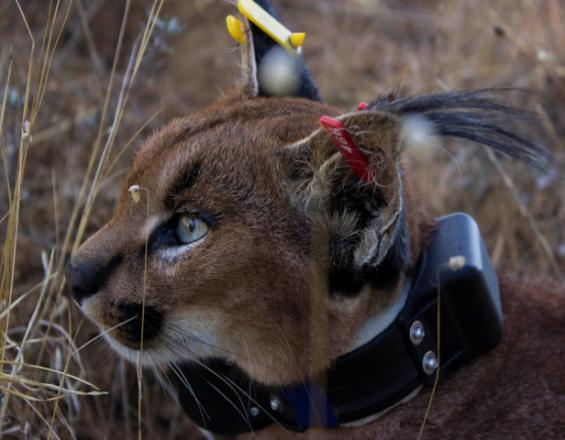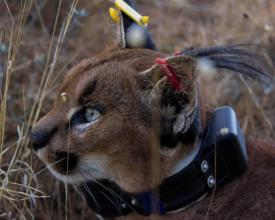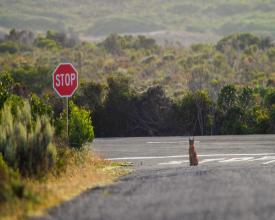
The Urban Caracal Project

The Urban Caracal Project is a research program focussed on establishing baseline information on the caracal (Caracal caracal) population of the Cape Peninsula, as well as assessing the effects of urbanization on the species and the threats to its survival in the region.
Caracals are medium-sized wild cats native to the region and one of the last remaining large predators of the Cape Peninsula. By studying them the project hopes to get a better understanding of how urbanization may be threatening wildlife across South Africa, and other parts of the world, similarly threatened by urbanization.
The specific goals of the project are to:
- Establish information about the population size, health of individuals, and the distribution of caracals across the Peninsula.
- Evaluate the effects of urbanization on the behaviour, movement patterns, diet, and genetic health of caracals in the Peninsula.
- Assess threats to survival for caracals in the Peninsula and potentially beyond to other parts of South Africa.
Impacts
Caracals are elusive animals making them hard to study. Therefore, the project uses GPS-collars to study the cats. They also collect samples for genetic, disease, and pesticide testing. Through intensive trapping efforts, combined with the collection of opportunistically found dead caracals (typically roadkill), the project is generating fine-scale movement, genetic, disease, and pesticide information about the animals.
5 years of autopsy evidence shows that the biggest threats to Caracals in the area are vehicle collisions, disease or poisons, poaching, lethal management, dog attack and death from other caracals. 73% of the dead Caracals found by the project were hit by cars, though there are likely many more deaths than the team are able to collect information on.
In a survey of pesticide exposure, 94% of caracals were found exposed to common household rat poisons, and exposure to this pesticide has been implicated in the deaths of multiple caracals. The project has also detected widespread exposure to DDT, although the implications of this exposure are not yet known.
The genetic studies have shown high levels of inbreeding in the population, which could threaten the viability of the population over the long-term. Project biologists are further exploring genetic questions to estimate the time-to-extinction of the population and exploring options for genetic rescue.










